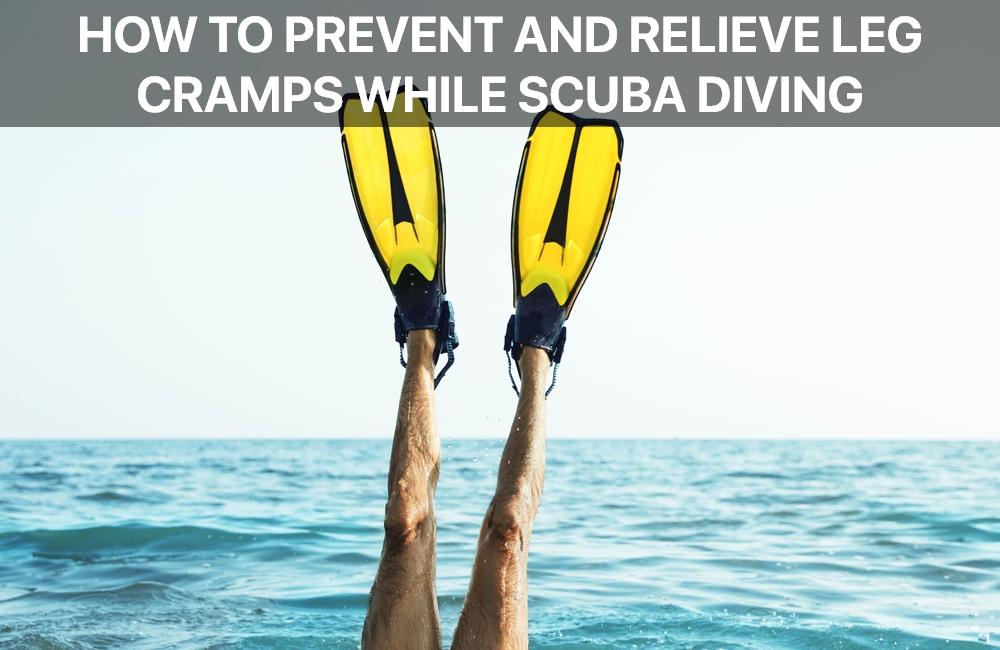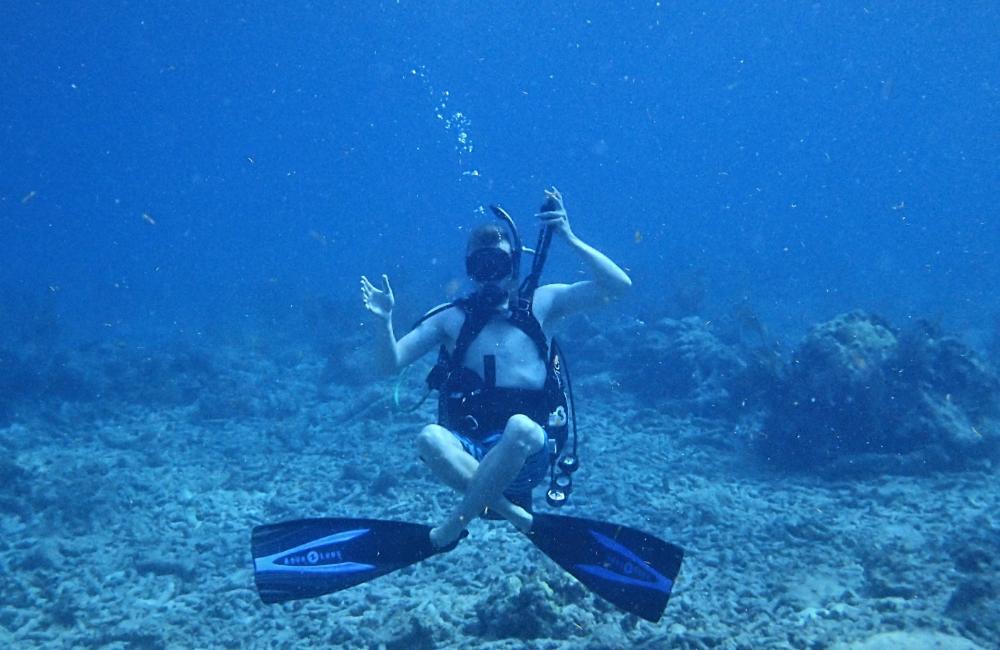Blog
How to Prevent and Relieve Leg Cramps While Scuba Diving?
Scuba diving is a thrilling underwater activity, but occasionally leg cramps can interrupt the fun. Leg cramps underwater seem to come out of nowhere and can temporarily make it difficult to move your legs, which can be quite alarming. Fortunately, with the right techniques and preparation you can both prevent and relieve these types of cramps while on your dive adventure.
In this article we’ll discuss what causes leg cramps while scuba diving as well as provide some tips for preventing them in the future.
Why do my leg muscles cramp up while scuba diving?
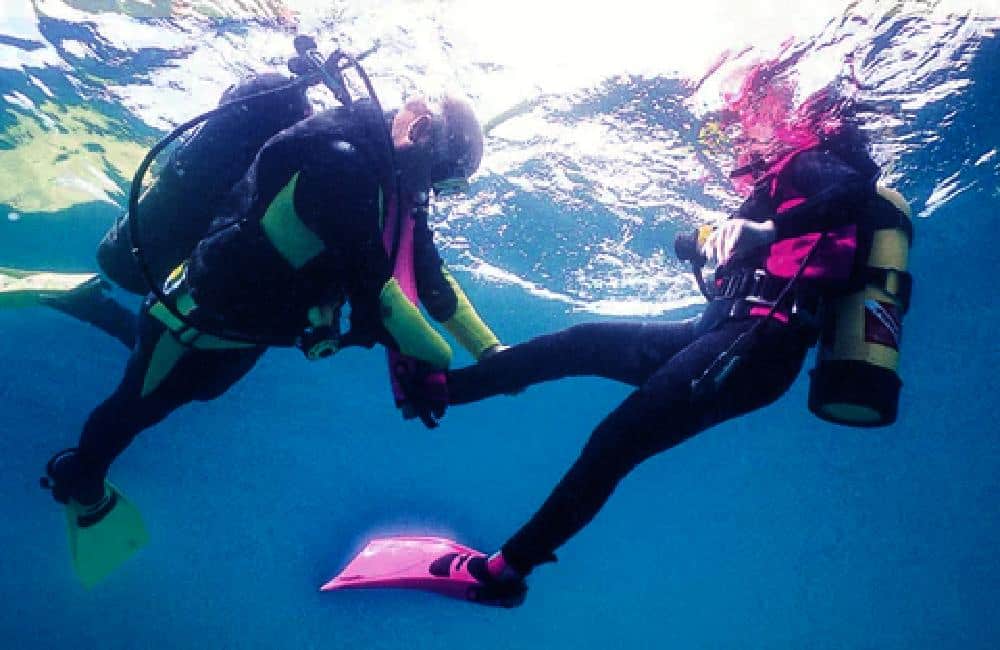
There are many reasons why your leg muscles might cramp up while scuba diving. It could be due to dehydration, electrolyte imbalance, or simply overuse. However, you can do a few things to help relieve leg cramps while scuba diving. First, ensure you stay hydrated by drinking plenty of water before and during your dive. You should also eat a balanced diet that includes electrolytes like sodium and potassium. Finally, if you start to feel a cramp, apply pressure to the muscle with your hand or gently stretch it out. Following these tips yn help prevent leg cramps and enjoy a safe and comfortable dive.
Familiar Sources of Leg Cramps While Scuba Diving
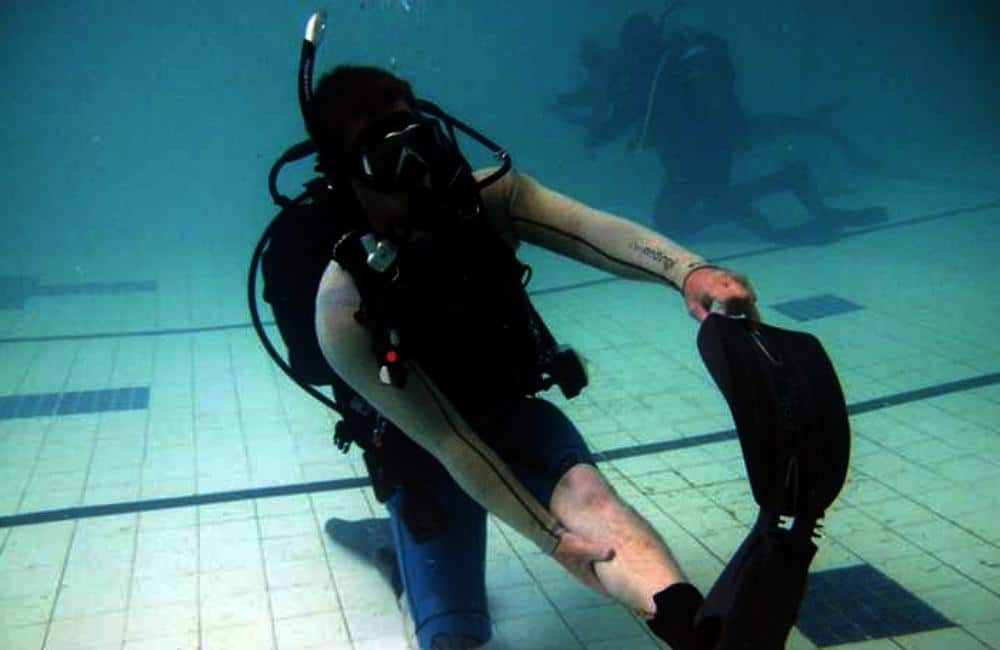
There are several possible causes of leg cramps while scuba diving, but fatigue is the most common. When you are tired, your muscles can start to cramp up, and this is especially true if you are not used to the physical activity of diving. Some other possible causes is:
-
- Dehydration
Relieving leg cramps while scuba diving can be tricky, but staying hydrated during your dive is essential. Dehydration can cause leg cramps, so drinking plenty of fluids before and during your dive is essential. If you start to feel a cramp coming on, stop swimming and stretching your legs. You may also want to try massaging the affected muscle. If the cramp persists, try gently bending your knee and bringing your heel toward your buttock. This stretch can help to relieve the cramp. Suppose you are still in pain; surface and rest until the cramp subsides. Again, drink plenty of fluids to prevent dehydration when you get out of the water.
-
- Lack of stretching
One of the most common complaints among scuba divers is leg cramps. While there are several potential causes, the most common is simply a lack of stretching. When you spend long periods in the water, your muscles can quickly become cramped and uncomfortable. To avoid this, it is essential to take a few minutes to stretch before diving. Focus on your calves, hamstrings, and hips, as these are the areas that are most likely to cramp up. If you still get leg cramps while diving, try changing your breathing pattern or swimming style. Taking a few preventative measures can minimize the risk of leg cramps and enjoy a more comfortable dive.
-
- Magnesium or potassium deficiency
One of the most common causes is magnesium or potassium deficiency. When these minerals are not present in adequate amounts, they can lead to muscle cramping. Another potential cause of leg cramps is dehydration. This is particularly common in warm water diving, as the body can lose a lot of fluid through sweating. In addition, dive computers can sometimes cause leg cramps by exerting too much pressure on the legs. If you experience leg cramps while diving, it is essential to stop descending and rest for a few minutes. If the cramps persist, you should ascend to shallower depths and seek medical attention.
-
- Overexertion and muscle fatigue
Overexertion and muscle fatigue are two of the most common culprits. Scuba diving can be pretty strenuous, and you must pace yourself to avoid overtaxing your muscles.
-
- Fins that don’t fit properly
While scuba diving, it is not uncommon to experience leg cramps. There are a few common causes of leg cramps while scuba diving, the most common being ill-fitting fins. When fins don’t fit properly, they can cause significant discomfort and may even lead to cramping.
How to avoid cramps before scuba diving?
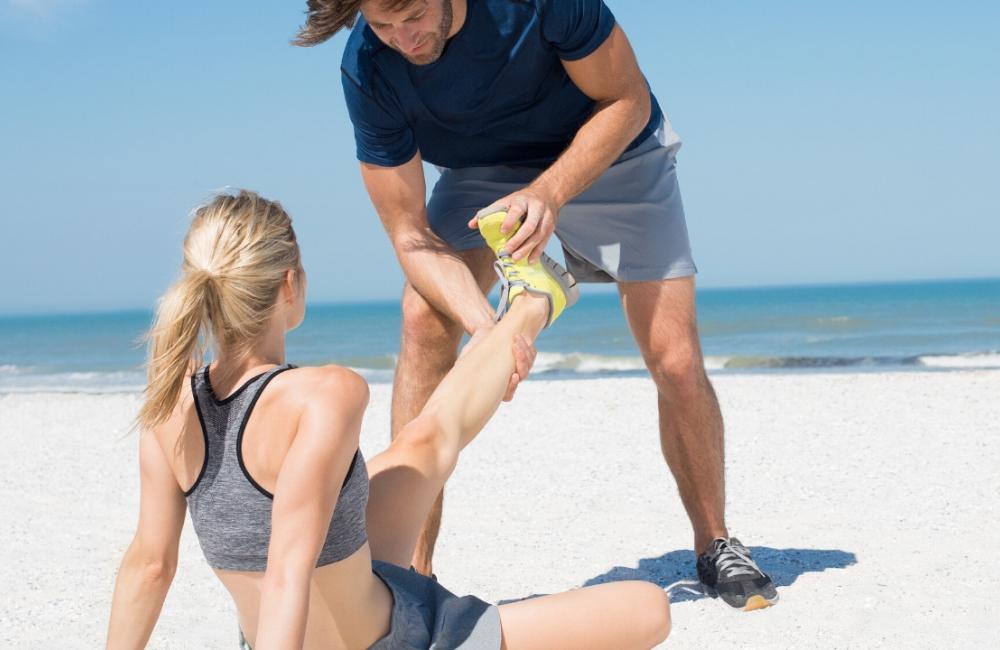
Nobody likes getting cramps- especially while scuba diving! The sensation can range from mildly annoying to painfully debilitating and can ruin an otherwise great dive. While there are many potential causes of cramps, some of them include the following:
-
- Stretch the muscles of the leg, thigh, and ankle regularly
There are several things that divers can do to avoid cramping during a dive. First, reaching out to the muscles of the leg, thigh, and ankle is significant. This will help to increase blood flow to the muscles and reduce the risk of cramping. Second, it is essential to stay hydrated before and during a dive. Dehydration can lead to cramping, so drink plenty of fluids both before and during diving. Finally, it is essential to warm up before diving. A simple warm-up routine of light exercises can help to prepare the muscles for the rigors of diving and reduce the risk of cramping.
-
- Drink before and after the dive, preferably minerals-enriched water
I was drinking before and after the dive is essential for preventing cramps. Various factors, including dehydration, electrolyte imbalance, and muscle fatigue, can cause cramps. Drinking plenty of fluids helps to prevent all of these problems. Minerals-enriched water is the best option, as it helps to replenish electrolytes and keep the body hydrated. Ensure to drink plenty of fluids before diving and drink even more after diving to prevent cramps.
-
- Potassium and magnesium are recommended, such as vegetables, dried fruits, and wholemeal food.
You can do a few things to avoid cramps before scuba diving. One is to ensure you get enough potassium and magnesium in your diet. Good sources of potassium include vegetables, dried fruits, and wholemeal foods. You should also ensure you are drinking plenty of fluids and staying hydrated.
-
- Consider purchasing fins of your own
One way to do this is to avoid getting cramps before diving. There are a few things you can do to help with this. First, consider purchasing fins of your own. This way, you can adjust them to fit your feet snugly and won’t have to worry about slipping while in the water.
Steps to relieve Cramps while Scuba Diving
While scuba diving, cramps can be a nuisance and may even cause you to abort the dive. There are a few steps that you can take to try and relieve cramps while scuba diving.
-
- Signal to your buddy that you have a cramp in your leg
Cramps are one of the most common problems people experience while scuba diving, but they can be quickly relieved with a few simple steps. Suppose you experience a cramp, signal to your buddy that you need help. They can then swim over and provide support while you slowly float to the surface. Once you reach shallower water, try to stretch out the affected muscle and massage it gently. Using a hot pack or warm towel, you may also want to apply heat to the muscle. If the cramp persists, take a warm shower or bath when you get out of the water.
-
- Grab the top of your fin
If you start to feel a cramp coming on, you can do a few things to relieve the pain. First, grab the top of your fin and pull it towards you. This stretch will help to loosen the muscles in your leg and should provide some relief. If the cramp is in your arm, extend it thoroughly and then flex your hand towards your wrist. You can also try massaging the muscle to work out the knot.
-
- Stretch your leg while dragging back the top of your fin
Try stretching your leg while pulling back the top of your fin. This will help to lengthen the muscle and ease the tension. If that doesn’t work, try massaging the muscle with your hand or using a topical cream to relieve muscle pain. In most cases, these simple steps will quickly relieve the cramp and allow you to get back to enjoying your dive.
-
- You can also massage your calf
While Scuba diving, you may experience cramps in your calves. You can try the following to relieve the cramp: Massage the muscle to help relieve the cramp. If you are still experiencing pain, stop diving and seek medical attention.
-
- Balance yourself with your other arm
Scuba diving is an excellent way to relieve leg cramps. By balancing yourself with your other arm, you can take the pressure off your legs and allow them to relax. This will also help improve your buoyancy and make swimming easier. If your legs are still cramping after a few minutes, try using a floatation device to support your legs. This will take the pressure off your legs and allow them to relax. Remember, if you are having difficulty supporting yourself, ask a friend or family member for help. Scuba diving is an excellent way to relieve leg cramps, so don’t hesitate to try it!
Conclusion
Leg cramps can be excruciating and debilitating. However, with a little bit of edge and preparation, you can help prevent these cramps from occurring in the first place and know what to do if they strike while underwater. We hope this article has been helpful and that you will keep these tips in mind on your next scuba diving adventure.
